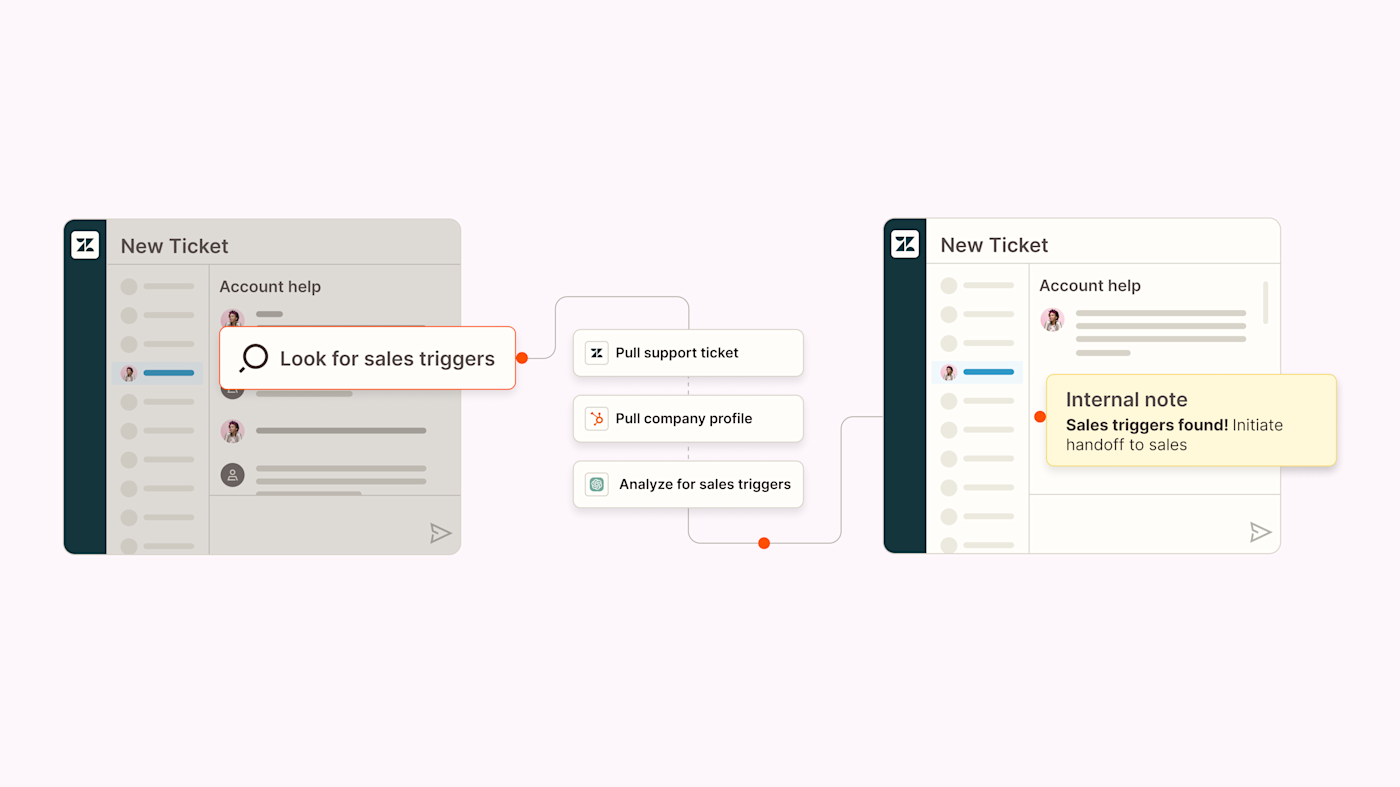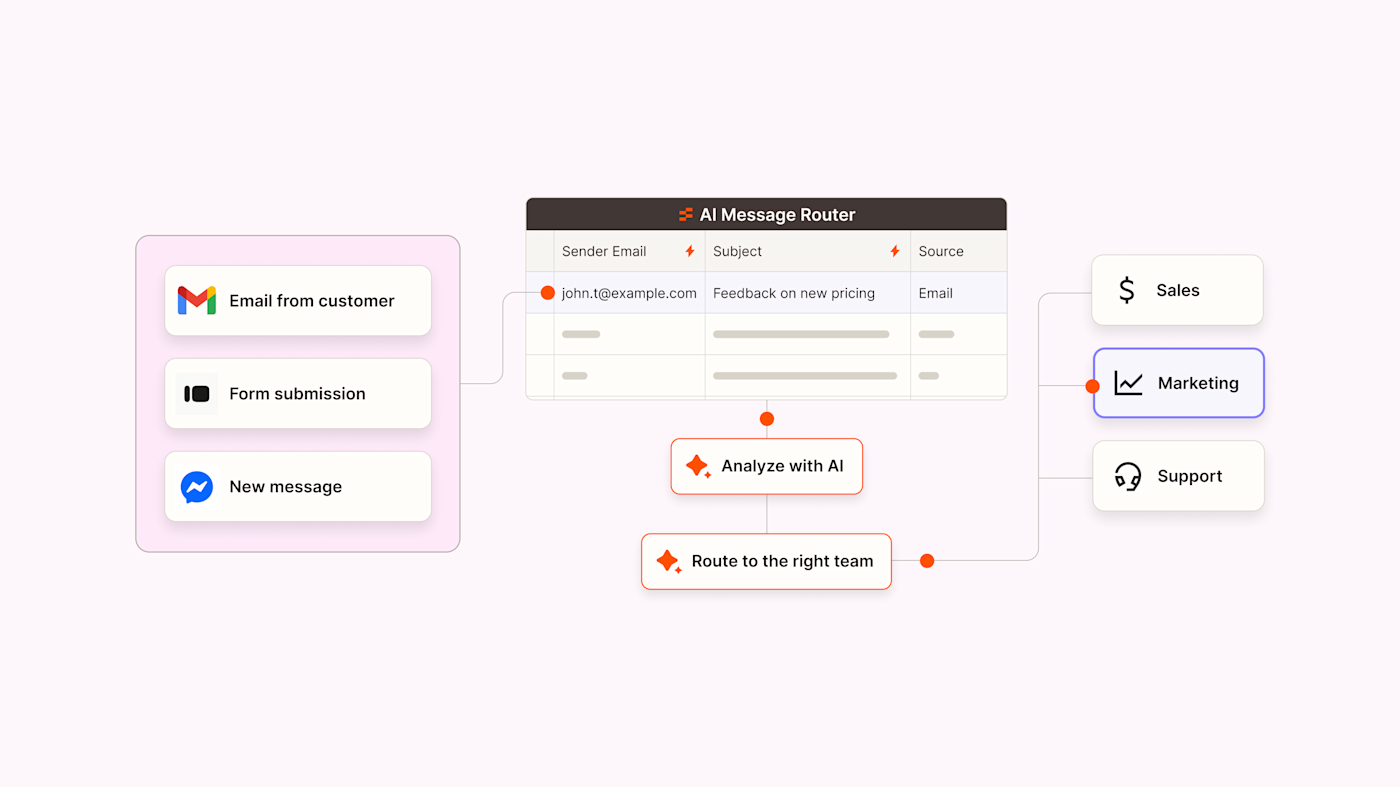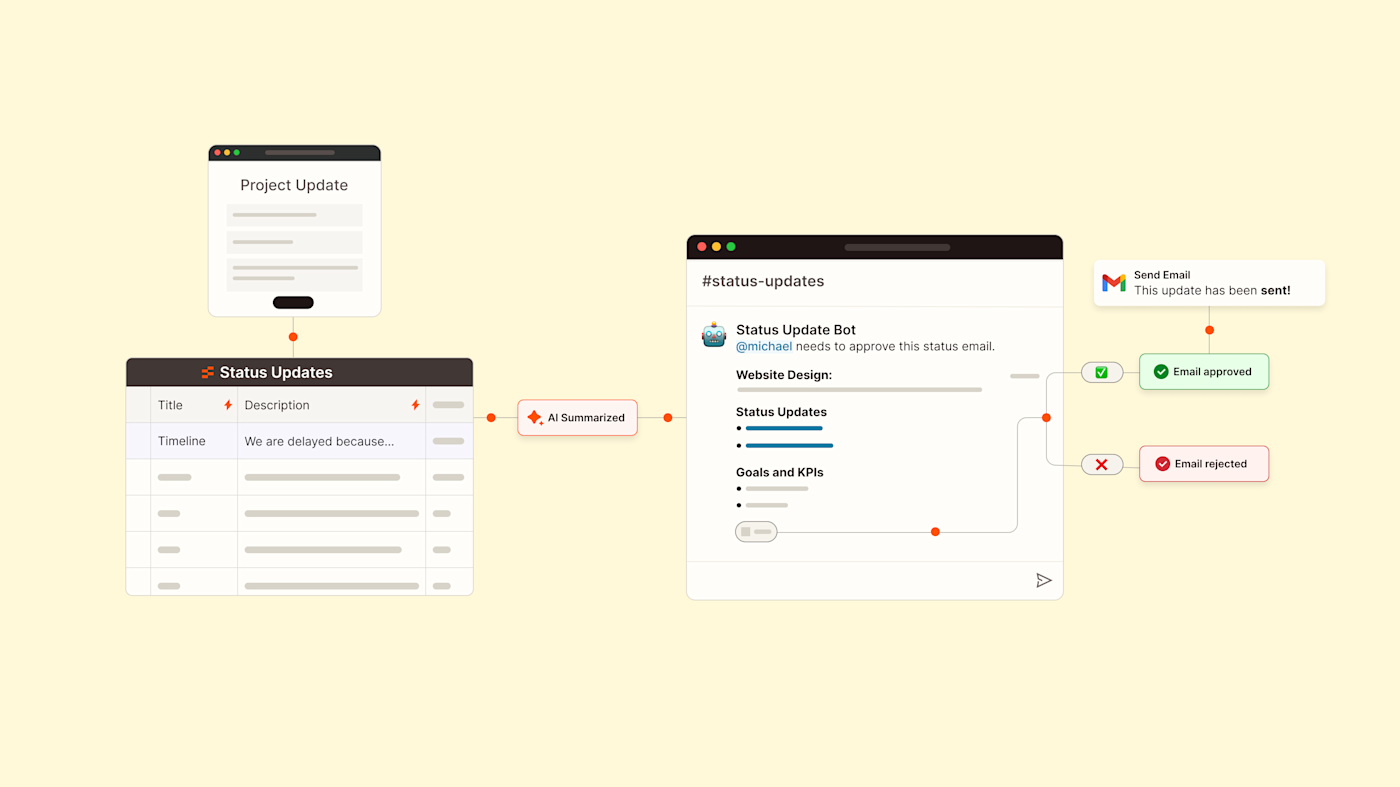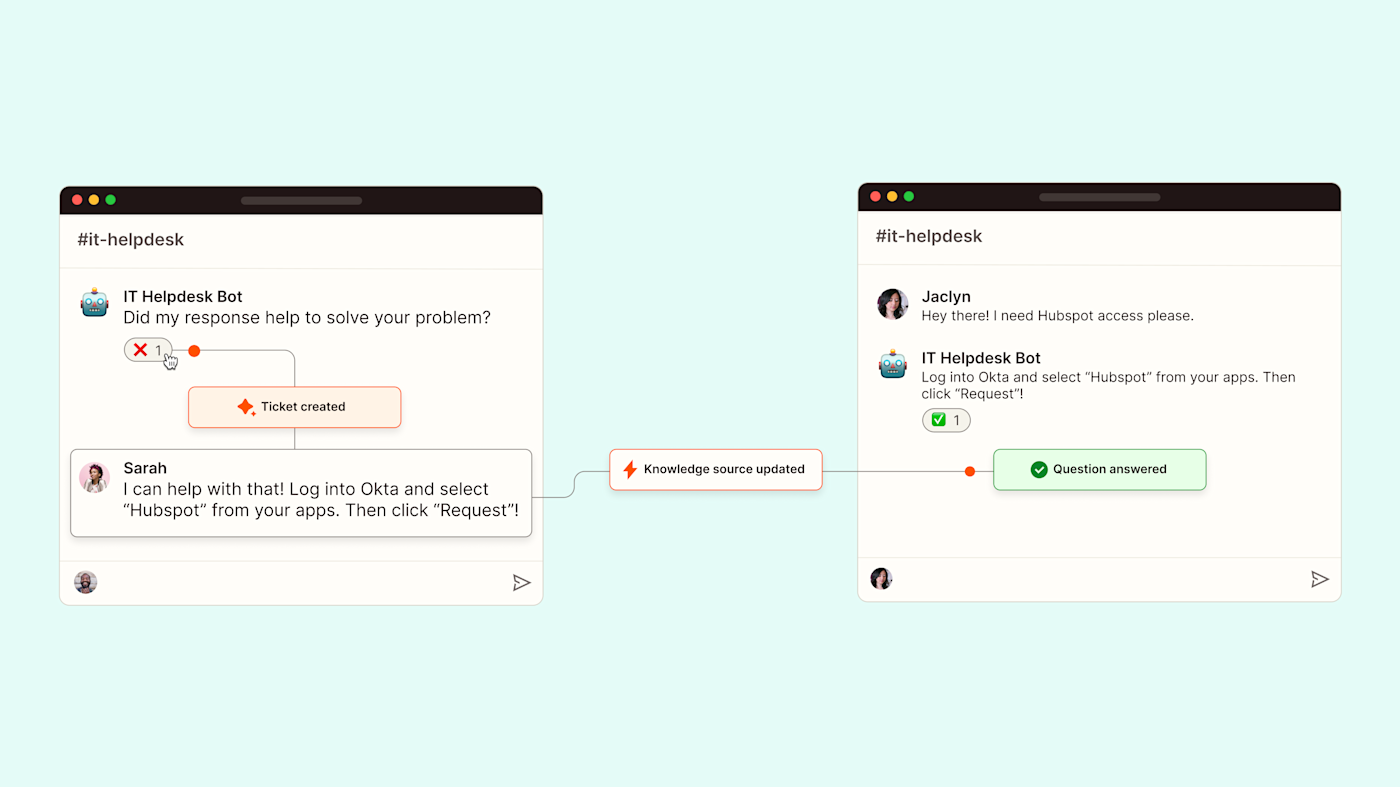[ad_1]
Your crew wants to maneuver quick. You are launching campaigns, closing offers, onboarding clients—and attempting to maintain up with every thing in between. However as your enterprise grows, so does the complexity. Immediately, each course of has 100 steps, 5 instruments, and a dozen folks concerned. Issues decelerate. Information will get siloed. And automation—the factor that was speculated to make life simpler—begins to really feel not possible to scale.
The stakes are highest for enterprise groups: it’s essential to transfer shortly however not on the expense of safety. You wish to empower groups to automate their work however not open up a tangle of permissions and shadow IT. And also you wish to construct workflows that scale throughout departments with out creating extra work for the oldsters sustaining them.
I work at Zapier, an enterprise that not solely helps different companies automate their workflows, however depends on automation to energy our personal inner operations. I’ve seen firsthand how the correct automation can clear bottlenecks, align groups, and make it easier to scale with out burning out your folks.
On this information, I am going to break down what enterprise automation actually means, the challenges that make it more durable than it needs to be, and the way giant organizations are utilizing it to work quicker with management and confidence.
Desk of contents:
What’s enterprise automation?
Enterprise automation is the apply of utilizing expertise to attach processes and software program throughout giant, complicated organizations. At its easiest, it means changing guide duties—like updating a CRM or routing an bill—with automated workflows. However at scale, it is extra than simply shaving seconds off of a repeatable workflow. It is about serving to complete groups transfer quicker, make higher selections, and keep aligned throughout instruments and departments.
Consider it like a nervous system for your enterprise. As a substitute of counting on folks to cross data from one crew to a different—or copy-paste knowledge between disconnected platforms—automation makes positive the correct actions occur routinely, behind the scenes. For instance, perhaps you wish to set off onboarding workflows for brand spanking new hires, or sync lead knowledge throughout advertising and marketing and gross sales instruments. You may even construct an automatic system for orchestrating approvals throughout departments.
Enterprise automation helps groups keep in circulation with out sacrificing management.
Challenges of automating for enterprise
At Zapier, it appears like each crew has its personal separate assortment of favourite instruments. And in a company of over 750 folks, we might be fully misplaced with out the flexibility to make use of automation to attach and streamline our processes throughout departments.
However and not using a sturdy automation coverage, that sheer variety of groups and instruments may create a roadblock to enterprise automation that smaller organizations haven’t got to fret about. For instance:
-
Safety. Groups wish to transfer quick, however additionally they want guardrails to maintain delicate knowledge from being uncovered or misused. Which means automation instruments want to fulfill enterprise-grade safety requirements and supply transparency into how AI is getting used.
-
Entry and permissions. Give customers an excessive amount of entry, and also you danger errors or safety points. Too little, and automation turns right into a bottleneck as an alternative of an answer. Enterprises want fine-grained management over who can view, edit, or set off automations—ideally with out creating extra work for IT.
-
The sheer sprawl of instruments. Completely different groups use completely different tech stacks, and getting these instruments to speak to one another is not at all times easy. A gross sales crew may reside in HubSpot, whereas buyer success runs in Zendesk. In case your automation platform would not combine broadly—or wants an excessive amount of dev work to sew issues collectively—it is arduous to scale automation throughout the group.
-
Approval bottlenecks. Even easy automations may want buy-in from IT, authorized, safety, and division heads. And since priorities range throughout groups, it is easy for automations to get caught in assessment purgatory earlier than they ever launch.
Methods to know if your enterprise is prepared for enterprise course of automation
There is not any good guidelines, however a number of alerts will help you recognize when it is time to put money into enterprise automation.
In case your groups are spending hours every week on guide, repeatable duties—or if processes routinely break down when handoffs occur between departments—you are in all probability prepared. You may also discover rising stress to maneuver quicker with out growing headcount, or a must centralize visibility into workflows taking place throughout siloed instruments.
One other main signal is should you’re already automating, nevertheless it’s taking place in pockets. Possibly advertising and marketing has a number of automation guidelines arrange inside Salesforce, and IT has constructed some scripts, however there isn’t any customary, safe method to scale automation throughout the corporate. That is often the second when investing in enterprise automation pays off—not simply to help extra automation, however to do it with governance, reliability, and scalability.
Sorts of enterprise automation
Enterprise automation is not one-size-fits-all. It spans every thing from automating inner crew duties to orchestrating complicated, cross-functional workflows.
When on the lookout for data on enterprise automation sorts, it’s possible you’ll come throughout phrases like enterprise course of automation (BPA), robotic course of automation (RPA), and clever automation—particularly in analyst experiences or vendor supplies. Here is a fast primer to assist translate.
|
Automation sort |
What it means |
|---|---|
|
Automating structured, cross-functional enterprise workflows |
|
|
Utilizing software program “bots” to imitate human actions in a UI (e.g., knowledge entry, display screen scraping) |
|
|
Integration or SaaS automation |
Connecting apps and methods by way of APIs or middleware |
|
Rule-based automation |
Logic-based workflows that comply with “if this, then that” guidelines |
|
Clever or AI automation |
Automations that incorporate machine studying, pure language processing, or LLMs |
Whereas these phrases are useful, they refer extra to the applied sciences powering automation, fairly than who makes use of it or what it is for. In addition they aren’t unique to enterprise-level automation.
As a substitute of dividing enterprise automation into these classes, I am going to persist with a people-first framing right here—as a result of automation is barely useful if it really helps groups work higher. Listed below are a number of of the commonest approaches to enterprise automation (every of which could use a mixture of BPA, RPA, integrations, rule-based automation, and AI).
1. Departmental automation
These are automations that streamline workflows inside a single crew or perform. For instance, human assets groups may automate worker onboarding duties like creating accounts and provisioning instruments. Finance may construct automations for recurring approvals or month-to-month reporting. Advertising and marketing may use automation to route inbound leads or personalize marketing campaign outreach.
The important thing right here is that the automation serves one division’s processes—nevertheless it nonetheless wants to fulfill enterprise requirements round safety, visibility, and entry.
2. Cross-functional workflow automation
Many enterprise processes do not stay neatly inside one crew. A brand new buyer deal, for instance, may require handoffs between Gross sales, Authorized, Finance, and Buyer Success. Automating these sorts of end-to-end workflows reduces the danger of dropped balls, improves pace, and retains everybody aligned throughout departments.
3. IT- and ops-led enterprise automation
Enterprise IT and enterprise operations groups usually construct automations to help different departments. These may embrace inner ticket routing, system monitoring, or consumer provisioning and deprovisioning. In contrast to departmental automations, these are often constructed with scalability and governance on the forefront—and sometimes contain extra technical platforms or {custom} scripting.
As extra groups undertake automation, IT will play a extra central position in vetting instruments, managing entry, and constructing (safe) self-serve automation. However the most effective enterprise automation instruments, like Zapier, permit anybody on the group to construct for themselves, too.
4. AI-assisted enterprise automation
Spend any time on-line and also you may assume AI is nearly producing awkward headshots or robotic weblog intros. However in apply, it is change into a robust layer for enterprise course of automation—particularly on the enterprise stage.
You may add AI to your workflows to do issues like summarize lengthy Slack threads, extract key knowledge from contracts, or categorize help tickets by tone or urgency. It might rewrite messy enter into clear CRM data, convert name transcripts into follow-up emails, or translate requests from a number of languages—all with out human intervention.
Guidelines-based workflows are nonetheless important (and sometimes extra dependable for repeatable processes), however AI makes it doable to automate extra ambiguous or subjective duties. It might interpret intent, generate content material, and deal with edge circumstances that used to require guide assessment.
It might even assist resolve what workflow to set off subsequent, which implies you need to use AI so as to add intelligence to beforehand static automations. With AI orchestration, AI can consider a request, decide the suitable subsequent step, and set off the correct automation—no pre-set set off required. As a substitute of constructing static paths for each situation, you may depend on AI brokers to dynamically route work based mostly on real-time context.
Enterprise automation examples
I’ve tried explaining Zapier to sufficient family and friends to know the way summary of an idea automation may be. And if you apply the thought to bigger companies and groups, it will get even fuzzier. What does enterprise automation really appear to be in apply?
Listed below are a number of real-world examples of enterprise organizations which have discovered methods to save lots of time, enhance income, and scale extra effectively with automation.
Buyer success
ActiveCampaign found that 25% of their new clients who did not obtain one-on-one onboarding churned inside the first 90 days. However as the corporate grew (and added 1000’s of recent customers every month), scaling that form of consideration wasn’t possible.
Their answer was to construct a totally automated “one-to-many” onboarding expertise. Utilizing Zapier, the crew created a seamless system to auto-enroll new clients into reside onboarding webinars, hosted in six languages. When a brand new consumer signed up, they had been tagged by language in ActiveCampaign, which triggered a webhook to ship their information to Zapier. Zapier reformatted the information and handed it to Demio (their webinar platform), registering them routinely. From there, extra Zaps triggered follow-up emails based mostly on whether or not the client attended or missed the session.
This automation elevated webinar attendance by 440%, and 90-day churn dropped by 15%. Adoption inside the first 30 days additionally doubled.
What began as a scrappy answer for onboarding is now being expanded to different touchpoints within the buyer journey. ActiveCampaign’s crew is utilizing automation not simply to save lots of time, however to create scalable, human-centered experiences that enhance retention and buyer success at scale.
You may construct an analogous workflow with this Zapier template that identifies gross sales alternatives in help tickets and routes them on to your gross sales or success crew.
Enhance gross sales leads from help tickets
Establish whether or not help tickets comprise shopping for alerts so you may simply route new results in gross sales.
Gross sales pipeline administration
Vendasta‘s gross sales reps had been shedding practically 300 working days a 12 months to guide CRM duties, contact enrichment, and inner follow-ups. For a corporation serving to 60,000+ companies scale with AI-driven gross sales and advertising and marketing instruments, their very own inner methods had been falling behind.
To unravel the issue, Vendasta turned to Zapier and AI to streamline their complete gross sales pipeline. When a brand new lead entered the system—whether or not from a webinar, web site kind, or Fb advert—a Zap kicked off a multi-step course of:
-
Enriching lead knowledge by way of Apollo and Clay
-
Summarizing lengthy firm descriptions with AI
-
Immediately creating data of their CRM utilizing a custom-built Zapier app
-
Routing results in the suitable rep based mostly on trade or phase
Vendasta additionally automated their post-call workflows. Utilizing Zapier’s AI steps and ChatGPT, transcripts from gross sales calls are routinely summarized, logged to the CRM, and used to draft customized follow-up emails—saving quarter-hour per name.
Vendasta recovered an estimated $1 million in income by eliminating guide work and serving to reps deal with closing offers. What started as a repair for a damaged lead course of turned an enterprise-wide shift towards automation-first considering.
To get began automating your enterprise’s gross sales course of, do that template for a unified lead seize system.
Unified lead seize
Simply channel leads from a number of sources into your CRM.
Undertaking administration and inter-team collaboration
When an organization is rising shortly, communication tends to get messy. Lucidchart‘s crew expanded by practically 50% in a single 12 months, which risked slowing down important collaboration between departments.
The crew used Zapier’s shared folders to construct and keep cross-functional automations and hold data flowing easily between instruments and groups. One Zap pulls lead knowledge from Marketo utilizing webhooks, then sends it to Salesforce to create new leads—guaranteeing the gross sales crew will get well timed, correct data with out ready on a {custom} integration. An analogous workflow routinely builds Zendesk help tickets from Marketo kind submissions when a request is not sales-related, routing it on to the help crew as an alternative of counting on somebody to observe the inbox.
To ensure nobody misses important points, Lucidchart additionally makes use of automation to ship real-time Slack alerts when one thing breaks of their lead circulation or methods, so a number of crew members can soar in, no matter who initially constructed the automation.
By leaning into automation and sharing possession throughout departments, Lucidchart turned potential rising pains into smoother collaboration—and gave their groups extra time to deal with strategic work.
Past sharing folders, you can even arrange automations to let AI brokers observe undertaking statuses and hold your crew updated. Use this undertaking administration stakeholder communications template to get began.
Undertaking administration stakeholder communications
Submit undertaking updates in a kind and let AI Brokers create clever standing replace emails.
IT Ops
As Distant scaled to over 1,800 workers, their IT crew struggled to maintain up with rising inner help wants with out burning out. With simply three folks dealing with practically 1,100 assist desk tickets per thirty days, they wanted a better method to work.
Utilizing Zapier and AI, Distant’s IT crew constructed a completely automated, multi-channel assist desk that is reworked how they ship help. Workers can submit requests by way of Slack, e mail, or chatbot, and a sequence of Zaps takes care of the remainder:
-
A webhook retrieves consumer particulars from Okta for context
-
ChatGPT classifies and prioritizes every ticket
-
A brand new ticket is created in Notion and saved in Zapier Tables
-
Zapier Brokers generate decision solutions by referencing comparable previous tickets
-
Customers obtain Slack updates with standing and AI-powered solutions
-
IT crew members can self-assign tickets by reacting with an emoji
Now, 27.5% of assist desk tickets are resolved routinely, and the crew saves over 600 hours each month—time that may in any other case be spent triaging and responding manually.
You may construct an analogous workflow with this Zapier IT assist desk template that makes use of AI to course of and prioritize tickets, including to a information base and getting smarter with every interplay.
IT assist desk
Enhance your IT help with AI-powered responses, automated ticket prioritization, and information base updates.
How to decide on an enterprise automation platform
As soon as you have recognized the processes you wish to automate, the following step is selecting a platform that may help your objectives—particularly as your enterprise grows. It doesn’t matter what a part of your enterprise you are automating, the platform you select needs to be highly effective, versatile, and scalable.
I clearly advocate selecting Zapier’s enterprise automation platform, however I additionally advocate totally evaluating all of your choices earlier than making an knowledgeable determination. Here is what to contemplate.
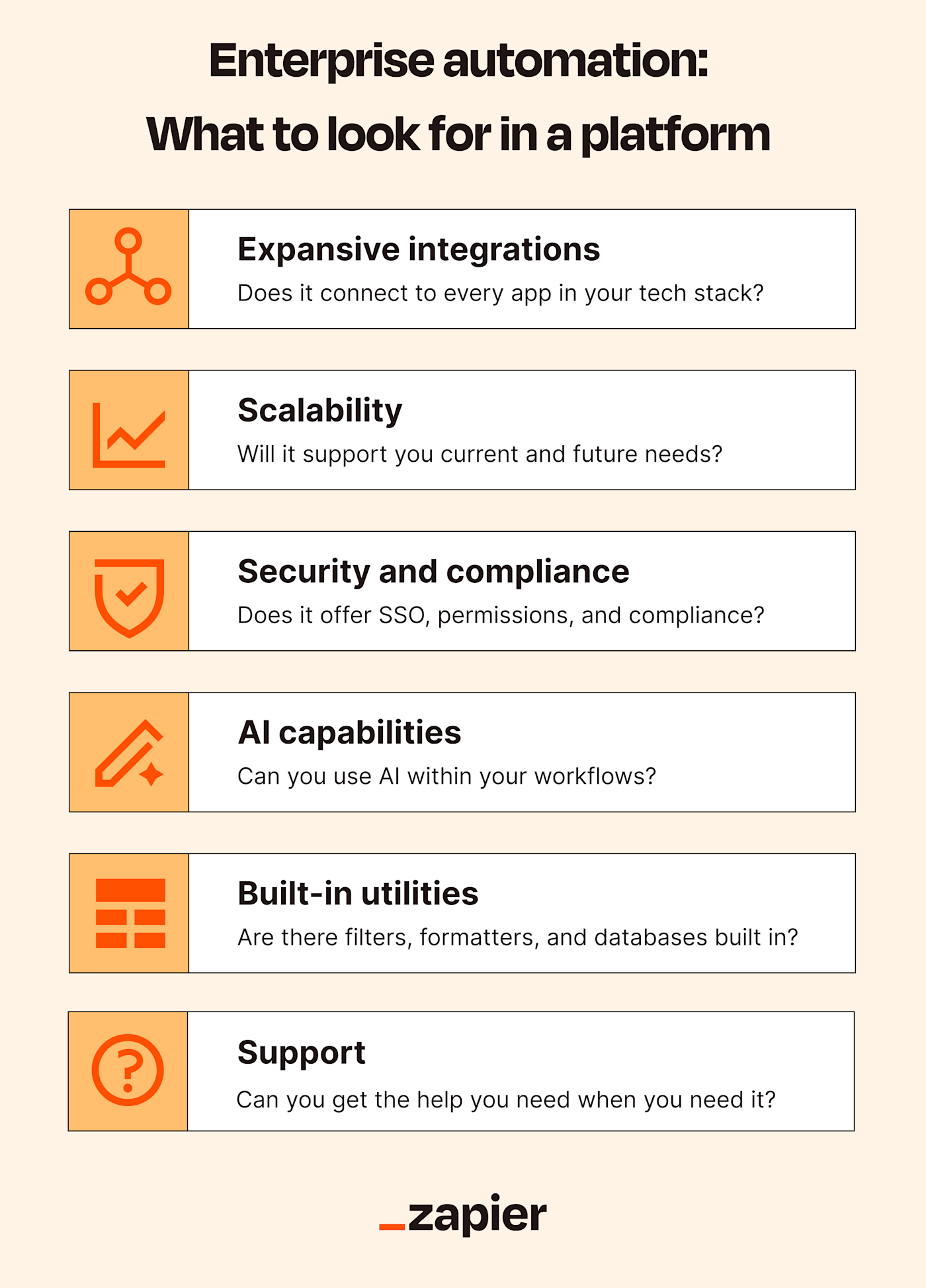
Know your automation wants
Begin by mapping out your present workflows. The place do bottlenecks occur? What’s nonetheless being accomplished manually that should not be? Then think about your ultimate state: May leads be enriched and routed routinely? May buyer tickets be categorized with AI?
Make a listing of the instruments you employ as we speak, together with any you count on so as to add quickly. The very best automation platform will combine seamlessly together with your present stack and help area of interest instruments, not simply the standard suspects. Zapier, for instance, integrates with 8,000+ apps, so it is prone to cowl all of your bases.
Additionally, take inventory of your workflows’ complexity. Some platforms deal with primary trigger-action automations simply tremendous, but when your processes contain branching logic, a number of apps, or {custom} code, you may need one thing extra superior, like Zapier.
Suppose long-term: Scalability issues
Enterprise automation is not a one-time undertaking—it is an ongoing funding. Select a platform that grows with you, not one you may outgrow in a 12 months.
Listed below are some inquiries to ask:
-
Can groups throughout the group construct and share automations securely?
-
Are there enterprise-grade options like SSO, permissions controls, and audit logs?
-
Will pricing scale sustainably as utilization will increase?
-
Does the platform help your present instruments and any future additions?
You may also wish to take into account whether or not the platform provides instruments past workflow automation. For instance, Zapier will help you construct inner apps with Zapier Interfaces, retailer workflow knowledge Zapier Tables, and work alongside AI with Zapier Brokers.
Should-have options to search for
Each enterprise is completely different, however a number of options are particularly useful on the enterprise stage:
-
Ease of use: A no-code, intuitive interface means extra groups can automate independently.
-
AI capabilities: Search for platforms that combine with AI instruments or supply built-in AI options like summarization and sensible triage.
-
Constructed-in utilities: Instruments like filters, formatters, and schedulers can save time and cut back the necessity for {custom} scripts.
-
Safety and compliance: Enterprise-grade security measures like SSO, role-based permissions, and SOC2/GDPR/CCPA compliance needs to be non-negotiable.
-
Assist: Search for sturdy documentation, useful AI assistants, and entry to actual human help if you want it.
Automate your enterprise processes with Zapier
You are on the Zapier weblog, so you will not be shocked to study that I believe Zapier is the best choice on the market for enterprise automation. However permit me to convey a number of receipts.
Zapier connects to over 8,000 apps and consists of built-in instruments for logic, formatting, scheduling, and AI. It is also intuitive and simple to make use of, which implies it could possibly meet enterprise wants with out the steep studying curve. And with different Zapier merchandise like Tables, Interfaces, Canvas, and Brokers, you may automate every thing from easy duties to complete workflows, multi function place.
It additionally helps enterprise options like SSO, consumer provisioning, and detailed utilization monitoring, so groups can collaborate securely whereas IT stays in management. Most significantly, Zapier makes it simple to start out easy and scale quick, whether or not you are constructing your first workflow or orchestrating automation throughout departments.
The suitable platform could make all of the distinction, whether or not you are seeking to cut back churn, streamline IT help, or empower each crew with automation. Zapier helps enterprises transfer quicker by connecting the instruments you already use, supporting complicated workflows, and making automation accessible throughout your complete group.
Should you’re able to scale automation with out scaling overhead, Zapier Enterprise has every thing it’s essential to get began—and develop.
Associated studying:
[ad_2]


